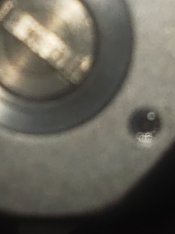HI all, I have striped JIS #0 screws head, as soon as I started to turn I felt the head begin to round. (I used JIS screwdriver)
he screw is to small for the rubber band/glove trick.
The scre is a base scree for a Nikon body and is flush with the base so there is nothing to grab.
Do they make an easy out for screws this small?
are there any other splotches than a throw away jewlers screwdriver snd super glue?
Thank you in advance
he screw is to small for the rubber band/glove trick.
The scre is a base scree for a Nikon body and is flush with the base so there is nothing to grab.
Do they make an easy out for screws this small?
are there any other splotches than a throw away jewlers screwdriver snd super glue?
Thank you in advance



